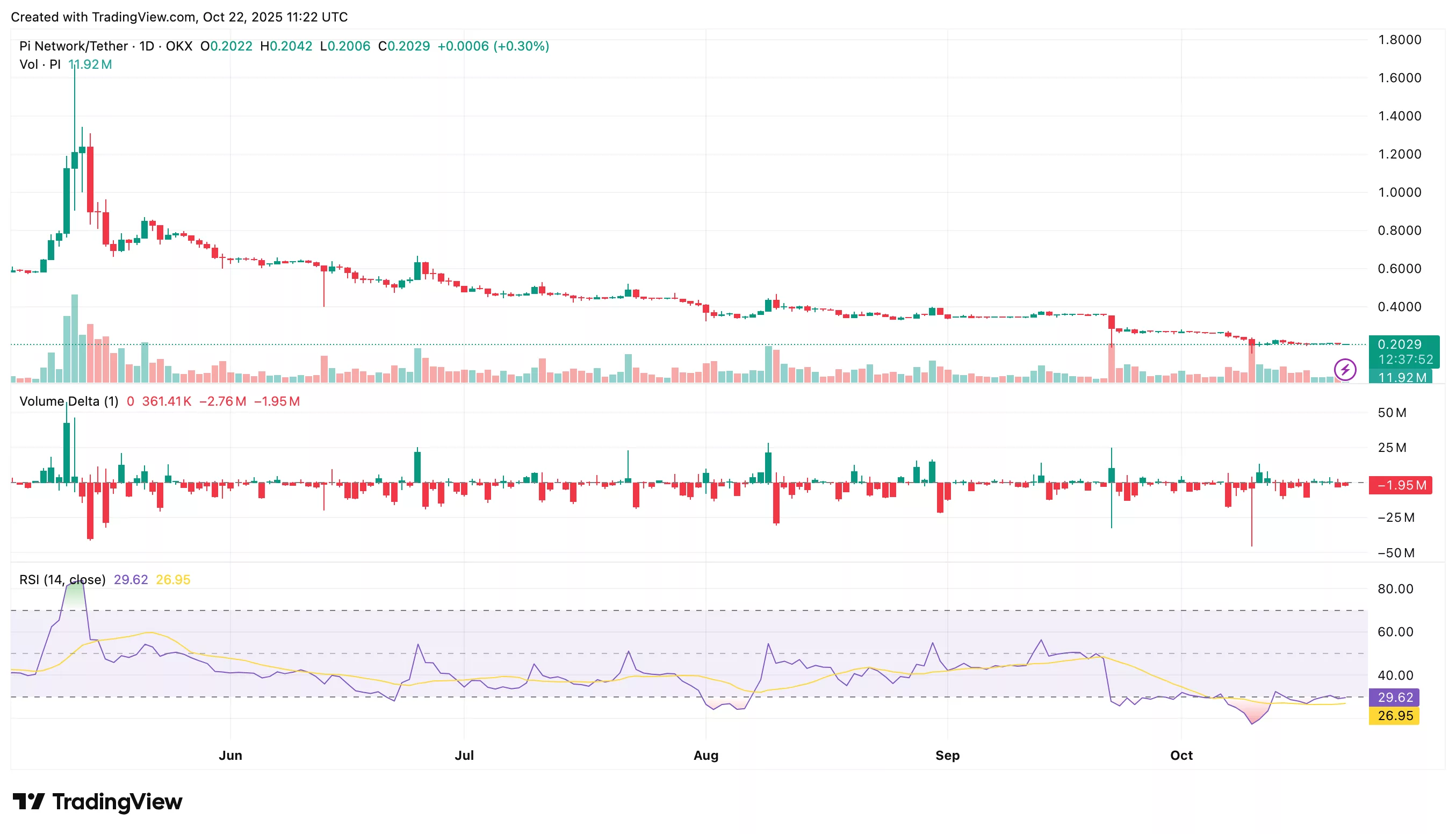Pi Network price struggles, is a new all-time low coming?
Pi Network price is forming a short-term support around $0.20, but persistent selling pressure suggests the token could slide further toward a new all-time low near $0.15.
- Pi Network price is forming short-term support around $0.20, but continued selling pressure could push the token toward a new all-time low near $0.15.
- Daily RSI is deeply oversold, and Volume Delta shows selling dominance, though a rebound to $0.25–$0.30 is possible if $0.20 holds and volume picks up.
PI Network price technical analysis
Pi Network (PI) price continues to extend its downtrend, having recently dropped below the key $0.25 level, with selling pressure intensifying on October 10 amid the broader market bloodbath triggered by renewed trade tensions. The token plunged nearly 12% that day.
PI has now fallen to the $0.20 zone, where it appears to be establishing a short-term support base.The daily RSI remains deeply oversold, while Volume Delta data indicates that selling pressure continues to dominate, with no clear signs of accumulation emerging yet.
If the $0.20 support holds, a technical rebound toward $0.25–$0.30 could materialize, especially if accompanied by rising volume. However, failure to defend this level could open the door to new lows toward $0.15.

Pi Network team is cooking
Despite the ongoing Pi Network price decline, the Pi Core Team has been advancing the network’s ecosystem. On October 2, they launched Pi DEX on the Testnet, introducing AMM liquidity pools, token creation tools, and full DeFi functionality for Pioneers and developers to explore.
The reason it’s only on Testnet, according to the team, is to “educate Pioneers, refine projects safely, and prepare for Mainnet DeFi with real Pi.”
Disclosure: This article does not represent investment advice. The content and materials featured on this page are for educational purposes only.
You May Also Like

Aave DAO to Shut Down 50% of L2s While Doubling Down on GHO

Bitcoin Price Prediction: BTC Projected to Clear $112,000 This Week as This $0.035 Token Tops Altcoin Watchlists

